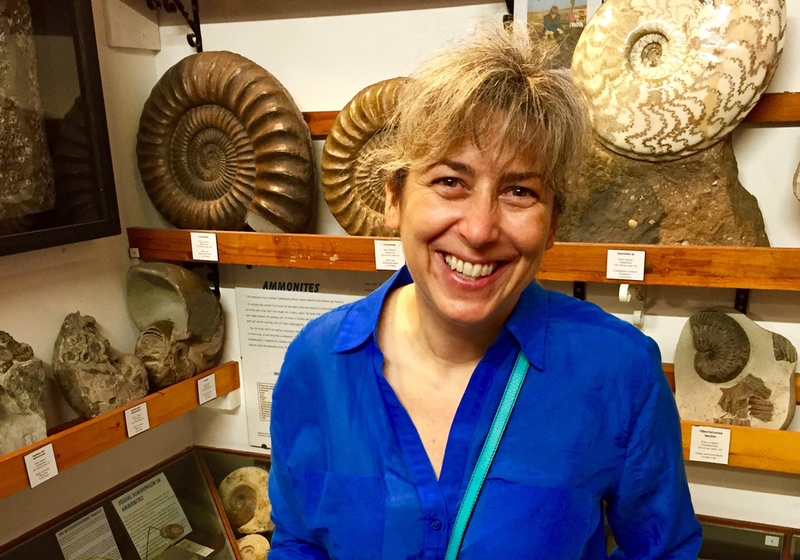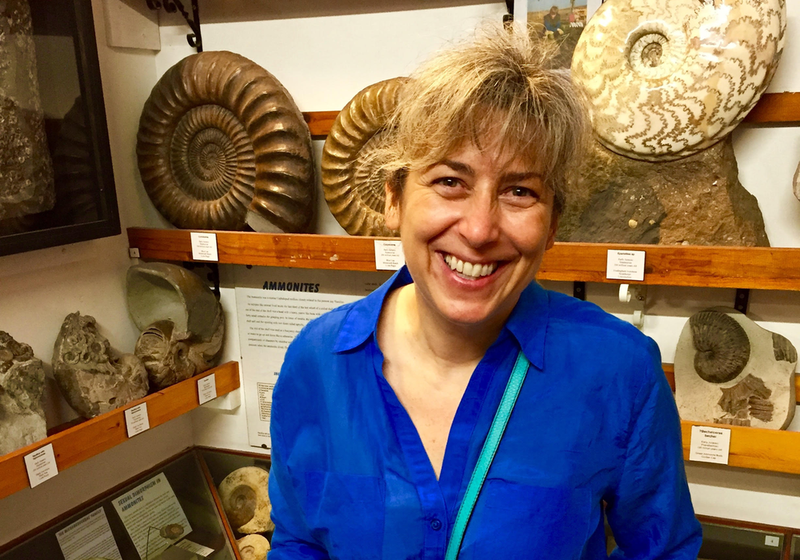Q&A: The Complexities of Biominerals
Nature is the ultimate materials scientist, crafting the shells, bones, and teeth that animals need to survive. Pupa Gilbert, a physicist at the University of Wisconsin–Madison, studies how organisms form these structures from so-called biominerals—minerals made by living organisms. She probes the structures at various stages of their development, with the goal of understanding how their nanometer- and micrometer-sized intricacies combine into macroscopic patterns that are, in her words, “so much better than the sum of their parts.” In an interview with Physics, Gilbert explains how animals construct structures from biominerals and discusses her passion for studying the unusual geometries that they form.
–Sophia Chen
What are biominerals?
They’re biologically formed crystalline materials. At the nanocrystal level, biominerals look identical to geological ones, but zoom out and you see that the mineral consists of complex structures at the micrometer, millimeter, and centimeter scales. They also grow into strange shapes, such as curved bones and pointy teeth. These shapes and structures have evolved for specific functions in the animal.
Can you give an example?
Yes—nacre, which is also known as mother-of-pearl. Nacre is the hard, iridescent material that coats the inside of many mollusk shells. It’s very beautiful, but this beauty has no function—it’s hidden until the animal dies. Rather, nacre is there to protect the mollusk’s soft body.
The structure of nacre makes it resistant to fracture. It consists of alternating 30-nanometer-thick sheets made of pliable biopolymers and 500-nanometer-thick layers of brittle aragonite, a calcium carbonate crystal. Any crack that forms quickly gets deflected by one or more of these interfaces, which stops it from propagating through the whole material. The deflection also quickly disperses the energy of the crack, halting its growth. This behavior doesn’t mean that nacre never fractures, but the deflections confine cracks so that fractures are rarely catastrophic. These alternating layers also create the interference effect that gives nacre its iridescence.
Another fantastic biomineral is the enamel in human teeth, which contains micro- and nanoscale structures that stop the tooth from breaking. Human enamel has a complex structure made of micrometer-sized rods. Within these rods are long, 50-nanometer-wide crystals that grow parallel to one another, like uncooked spaghetti in a box. These crystals deflect cracks like crazy.
What experimental techniques do you use to study these materials?
I use a technique called x-ray spectromicroscopy, which delivers both an image of the material’s structure—with 20-nanometer resolution—and the spectral information that reveals the orientation of its crystals. This information teaches us about the mineral’s formation mechanisms. Nacre, for example, starts out completely disordered. Then, gradually, as the material grows, the crystals reorient. Once the nacre reaches about 100 micrometers in thickness, its structure reaches a steady state, with its crystals just 15 degrees away from being perfectly aligned. We see all this by monitoring nacre specimens at various stages of their development.
How did you get into this field?
I went to a talk on biomineralization at a Gordon Research Conference in 2004, and I fell head over heels in love with this field of science. I promised to focus on it for the rest of my life. Now, 15 years later, I’m more convinced than ever that biomineralization is all I ever want to work on.
Why is that?
Biomineralization is one of the most complex and spectacularly successful phenomena in nature. Life, as we know it, is likely due to biomineralization. All of the attack and defense mechanisms of predators and prey are enabled by the existence of hard biomaterials, as are everyday processes that we take for granted, like the ability to walk, chew, and hear.
More than 500 million years ago, Earth experienced a giant boost in biodiversity called the Cambrian explosion. Complex animals with exoskeletons, endoskeletons, and teeth came into being. This explosion coincided with the onset of biomineralization, and it’s possible that the two phenomena have a causal relationship. Later, predators and prey appeared, with ferocious carnivores like Tyrannosaurus rex. T. rex had fangs the size and shape of bananas and could bite with 60,000 newtons of force, nearly 80 times that of the human jaw. If prey had any hope of evading this predator, it had to have bones so that it could swim, fly, or run away.
Studying the formation mechanisms of these bones and teeth is super fun. A biomineral doesn’t form one ion at a time like classic crystals growing in a supersaturated solution. Rather, it begins as an amorphous material inside an animal’s cells. Each cell then deposits this material particle-by-particle somewhere inside or outside of the animal’s body. This process is like an artist adding wet clay to shape an intricate sculpture. With time, the biomineral takes on a recognizable shape, be it a coral’s skeleton, a sea urchin’s spine, a turtle’s carapace, or a lobster’s claw. Understanding how these spines and claws are made involves physics, chemistry, and biology, as well as materials science and geology. It’s an incredibly rich field, with an infinity of problems to study.
Sophia Chen is a freelance writer based in Tucson, Arizona.
Know a physicist with a knack for explaining their research to others? Write to physics@aps.org. All interviews are edited for brevity and clarity.





